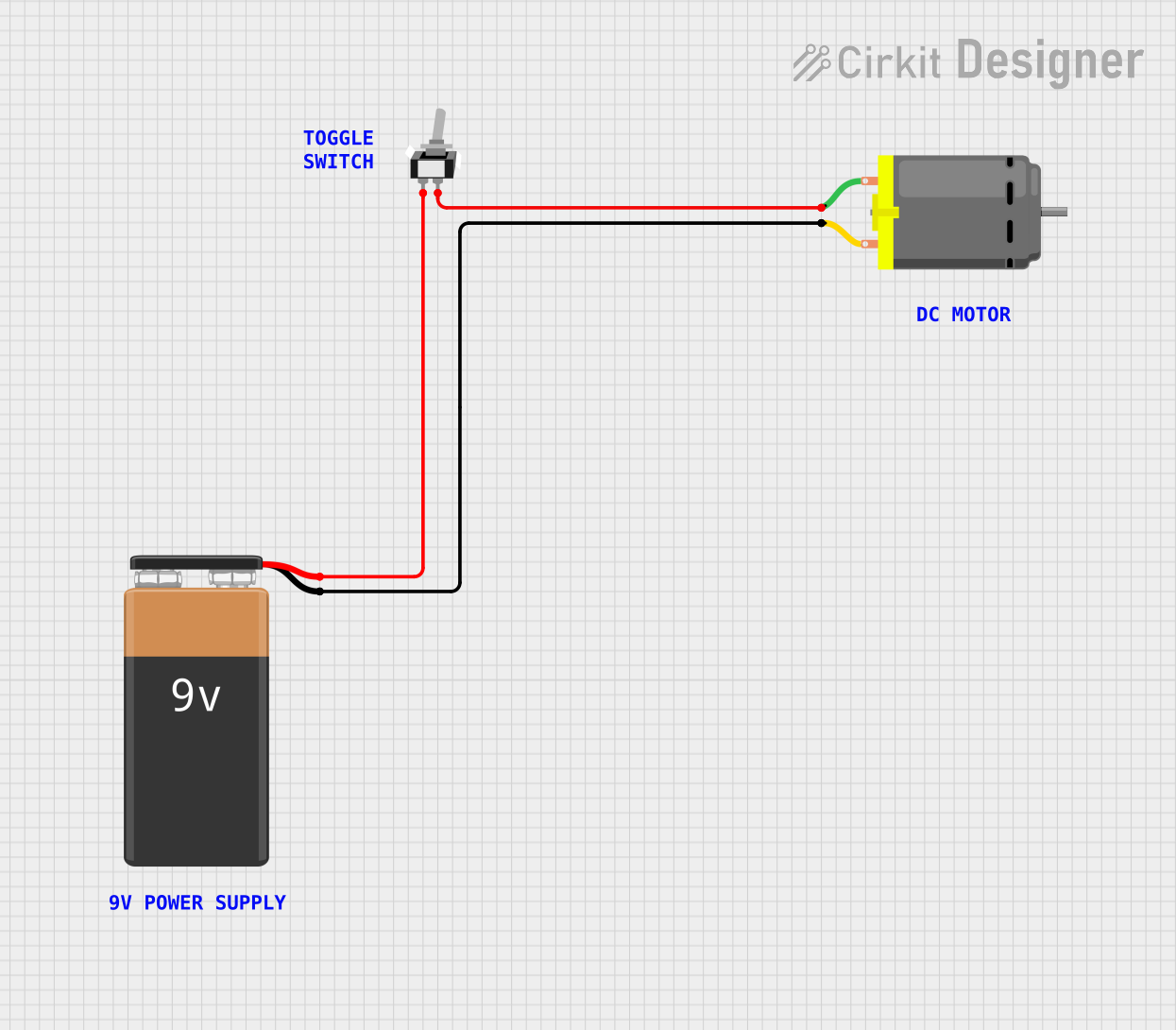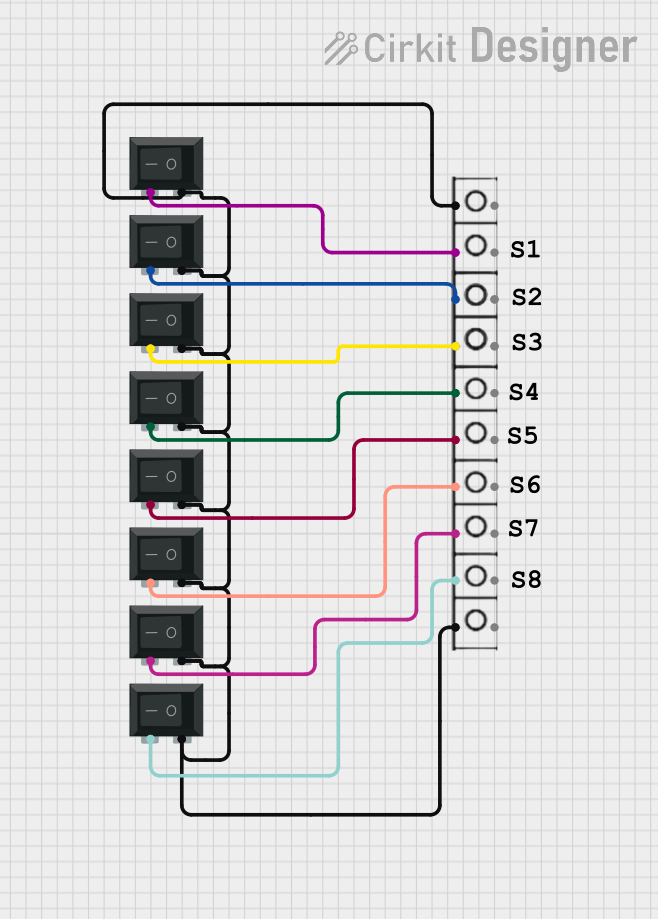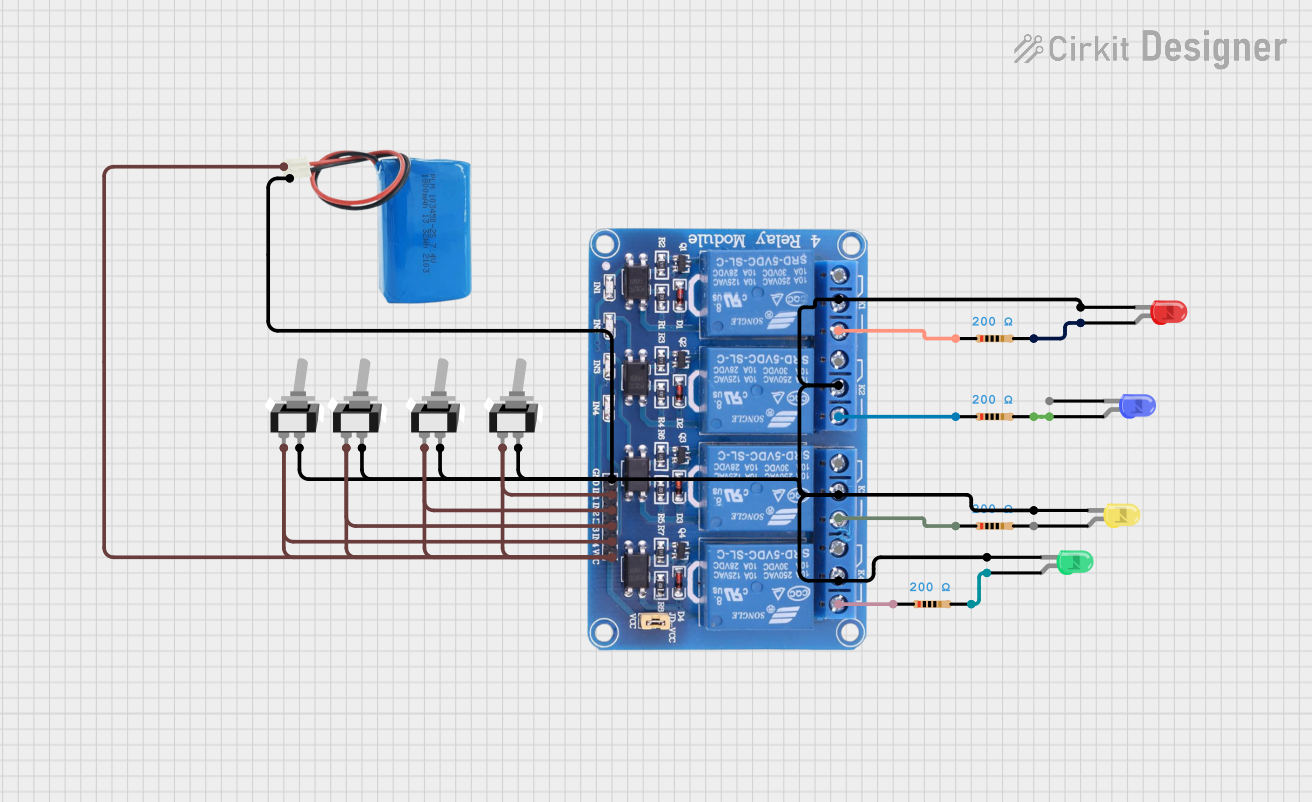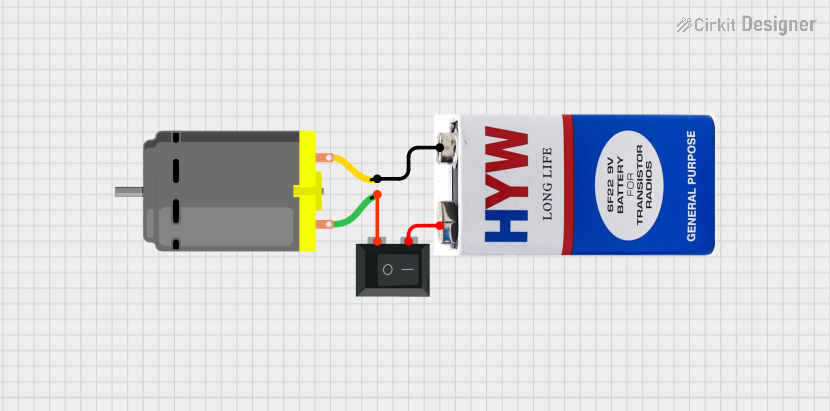
How to Use Switch Symbol SPST: Examples, Pinouts, and Specs

 Design with Switch Symbol SPST in Cirkit Designer
Design with Switch Symbol SPST in Cirkit DesignerIntroduction
A Single Pole Single Throw (SPST) switch is a fundamental electronic component used to control the flow of current in a circuit. It operates as a simple on/off switch, with two terminals that either connect or disconnect a single circuit. When the switch is closed, it allows current to flow; when open, it interrupts the flow.
Explore Projects Built with Switch Symbol SPST

 Open Project in Cirkit Designer
Open Project in Cirkit Designer
 Open Project in Cirkit Designer
Open Project in Cirkit Designer
 Open Project in Cirkit Designer
Open Project in Cirkit Designer
 Open Project in Cirkit Designer
Open Project in Cirkit DesignerExplore Projects Built with Switch Symbol SPST

 Open Project in Cirkit Designer
Open Project in Cirkit Designer
 Open Project in Cirkit Designer
Open Project in Cirkit Designer
 Open Project in Cirkit Designer
Open Project in Cirkit Designer
 Open Project in Cirkit Designer
Open Project in Cirkit DesignerCommon Applications and Use Cases
- Power control for small electronic devices
- Light switches in household circuits
- Circuit testing and debugging
- Basic on/off control in DIY electronics projects
- Used in conjunction with microcontrollers like Arduino for input control
Technical Specifications
Below are the key technical details of a typical SPST switch:
| Parameter | Value |
|---|---|
| Type | Single Pole Single Throw (SPST) |
| Number of Terminals | 2 |
| Voltage Rating | Typically 3V to 250V (varies by model) |
| Current Rating | Typically 0.5A to 15A (varies by model) |
| Contact Resistance | < 50 mΩ |
| Insulation Resistance | > 100 MΩ |
| Mechanical Life | 10,000 to 100,000 operations |
Pin Configuration and Descriptions
The SPST switch has two terminals, as described below:
| Pin | Description |
|---|---|
| Pin 1 | Connects to one side of the circuit (input) |
| Pin 2 | Connects to the other side of the circuit (output) |
Usage Instructions
How to Use the SPST Switch in a Circuit
- Identify the Terminals: Locate the two terminals of the SPST switch. These are typically labeled or easily identifiable.
- Connect the Circuit:
- Connect one terminal (Pin 1) to the power source or signal input.
- Connect the other terminal (Pin 2) to the load or circuit output.
- Operation: Toggle the switch to open or close the circuit. When the switch is closed, current flows; when open, the circuit is interrupted.
Important Considerations and Best Practices
- Voltage and Current Ratings: Ensure the switch's voltage and current ratings are suitable for your application to avoid damage or failure.
- Debouncing: When used with microcontrollers, consider implementing software or hardware debouncing to handle switch bounce (rapid on/off toggling due to mechanical contacts).
- Mounting: Secure the switch properly to avoid accidental disconnections or damage.
- Safety: Always disconnect power before wiring or modifying the circuit to prevent electric shock or short circuits.
Example: Using an SPST Switch with Arduino UNO
Below is an example of how to use an SPST switch as an input to an Arduino UNO:
// Example: Reading the state of an SPST switch with Arduino UNO
const int switchPin = 2; // Pin connected to one terminal of the SPST switch
const int ledPin = 13; // Built-in LED pin on Arduino UNO
void setup() {
pinMode(switchPin, INPUT_PULLUP); // Configure switch pin as input with pull-up resistor
pinMode(ledPin, OUTPUT); // Configure LED pin as output
}
void loop() {
int switchState = digitalRead(switchPin); // Read the state of the switch
if (switchState == LOW) {
// If the switch is closed (connected to ground), turn on the LED
digitalWrite(ledPin, HIGH);
} else {
// If the switch is open, turn off the LED
digitalWrite(ledPin, LOW);
}
}
Notes:
- The
INPUT_PULLUPmode enables the internal pull-up resistor, simplifying the circuit by eliminating the need for an external resistor. - The switch should connect Pin 2 to ground when closed.
Troubleshooting and FAQs
Common Issues and Solutions
Switch Not Working:
- Cause: Loose or incorrect wiring.
- Solution: Double-check the connections and ensure the switch terminals are properly connected to the circuit.
Switch Bouncing:
- Cause: Mechanical contacts in the switch may cause rapid on/off toggling.
- Solution: Implement software debouncing in your code or use a capacitor for hardware debouncing.
Overheating or Damage:
- Cause: Exceeding the voltage or current rating of the switch.
- Solution: Verify the ratings of the switch and ensure they match the circuit requirements.
No Response in Arduino Circuit:
- Cause: Incorrect pin configuration or missing pull-up resistor.
- Solution: Ensure the correct pin is used in the code and enable the internal pull-up resistor.
FAQs
Q: Can I use an SPST switch to control AC devices?
A: Yes, but ensure the switch is rated for the voltage and current of the AC device. Use caution when working with high voltages.
Q: How do I debounce an SPST switch in software?
A: You can use a delay or a state-checking algorithm in your code to filter out rapid toggling caused by mechanical bouncing.
Q: Can I use an SPST switch with a breadboard?
A: Yes, SPST switches are commonly used with breadboards for prototyping. Ensure the switch fits securely into the breadboard holes.
Q: What is the difference between SPST and SPDT switches?
A: An SPST switch controls a single circuit with two terminals, while an SPDT (Single Pole Double Throw) switch has three terminals and can toggle between two circuits.
This concludes the documentation for the SPST switch.